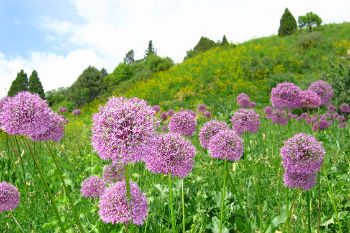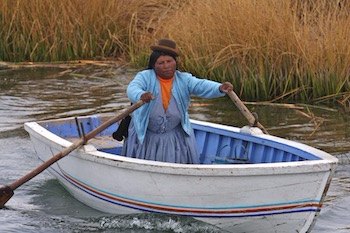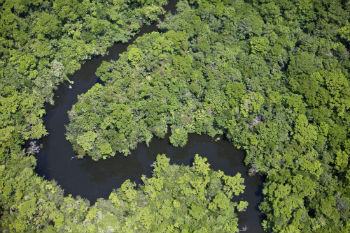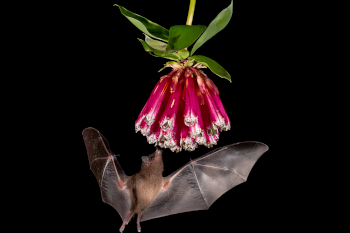Main menu
CEPF is a joint initiative of l’Agence Française de Développement, Conservation International, the European Union, Fondation Hans Wilsdorf, the Global Environment Facility, the Government of Canada, the Government of Japan and the World Bank. A fundamental goal is to ensure civil society is engaged in biodiversity conservation.
Visitez le site français コア情報の日本語翻訳を読むOr use Google Translate to translate the English site to your language:
GTranslate
Creating Change in the Dominican Republic Through Sustainably Sourced Chocolate
A consortium of CEPF grantees have taken innovative steps to address climate change through reforestation
05 June 2015
05 June 2015
"Seven billion dreams. One planet. Consume with care." This message, the theme of World Environment Day 2015, encourages people to live sustainably and responsibly manage natural resources.
According to the United Nations Environment Program (UNEP), “If current consumption and production patterns remain the same and with a rising population expected to reach 9.6 billion by 2050, we will need three planets to sustain our way of living and consumption.”
Did you know that creating change toward positive environmental action and sustainable consumption could start with something as small as a bar of chocolate?
Every year, people consume more than 3 million tons of cocoa beans. And the demand for organic or sustainably produced cocoa is increasing as consumers become increasingly concerned about environmental issues and food quality.
The Dominican Republic is the eleventh largest cocoa producer in the world and the number one producer of organic cocoa. Here, a consortium of CEPF grantees − Consorcio Ambiental Dominicano, Fundacion Loma Quita Espuela and the Sociedad para el Desarrollo Integral del Nordeste − have taken innovative steps to link chocolate companies from North America with landowners in the Dominican Republic to address climate change through reforestation activities and establish a sustainable financing mechanism for protected areas.
By selling the Dominican Republic’s first forest carbon credits under its carbon offsets strategy, the grantees were able to establish the country’s first private protected area in 2012. The Plan Vivo carbon credits give landowners, especially small-scale farmers, an added incentive to restore the forest through planting a mix of cacao and native wood species. This is because local landowners receive payments from a revolving fund to cover the costs of planting and maintaining native species when agreeing to enter their land into the carbon offset program. The fund is then reimbursed through the sale of the carbon offsets.
One unique and novel aspect of the project is the combination of cocoa bean sales with Plan Vivo offset credits, a component likely to be replicated at the national scale with small-scale producers. Part of the marketing strategy is to attach carbon offsets to organic cocoa sold to chocolate makers who can then offer climate change and climate adaptation outcomes to buyers in their supply chain.
So far three chocolate companies (Blue Bandana, Chocosol and Dandelion Chocolate) have joined and the local smallholder farmers involved are receiving a premium price on their organic cocoa beans, on top of the payments received for planting and maintaining native species. This demonstrates how climate change mitigation, biodiversity conservation and income generation can go hand-in-hand.
According to Charles Kerchner, the project lead, without funding from CEPF through its investment in the Caribbean Islands biodiversity hotspot, the project would not have had the necessary capital to move from the planning phase to on-the-ground implementation of payments for ecosystem services or establishment of the first private reserve.
This sustainable financing mechanism not only provides a return on investment to the chocolate makers and improves local farmers’ livelihoods, it is also helping ensure the entire region’s water quality and protecting habitat for threatened species, including the Bicknell’s thrush (Catharus bicknelli), a migratory songbird.
This World Environment Day − and every day − we can all take steps to consume sustainably. Here are a few other ways CEPF grantees are working to support sustainable production and consumption:
- In Tanzania, with CEPF support the International Centre of Insect Physiology and Ecology has trained poor community members to farm, process and market butterflies, beetles, organic honey, medicinal plants and raw silks as alternatives to the exploitation of forest biodiversity. Area incomes have risen by 15 to 25 percent, and surpluses benefit local school construction.
- In South Africa, CEPF support has helped wine producers adopt best practices and set aside more than 103,000 hectares of their land for long-term conservation.
- In eastern Nepal, with CEPF support the Namsaling Community Development Centre worked with forest user groups to promote alternative livelihoods that reduce pressure on forests. Three hundred farmers adopted sustainable agricultural practices, such as vegetable gardening, bio-pesticides and organic manure, and 10 women’s savings and credit groups began adding value to local agricultural products, such as by producing potato chips and dairy sweets for sale in local markets. In addition, the project installed more than 100 improved cooking stoves, which reduce firewood consumption by 50 percent.







